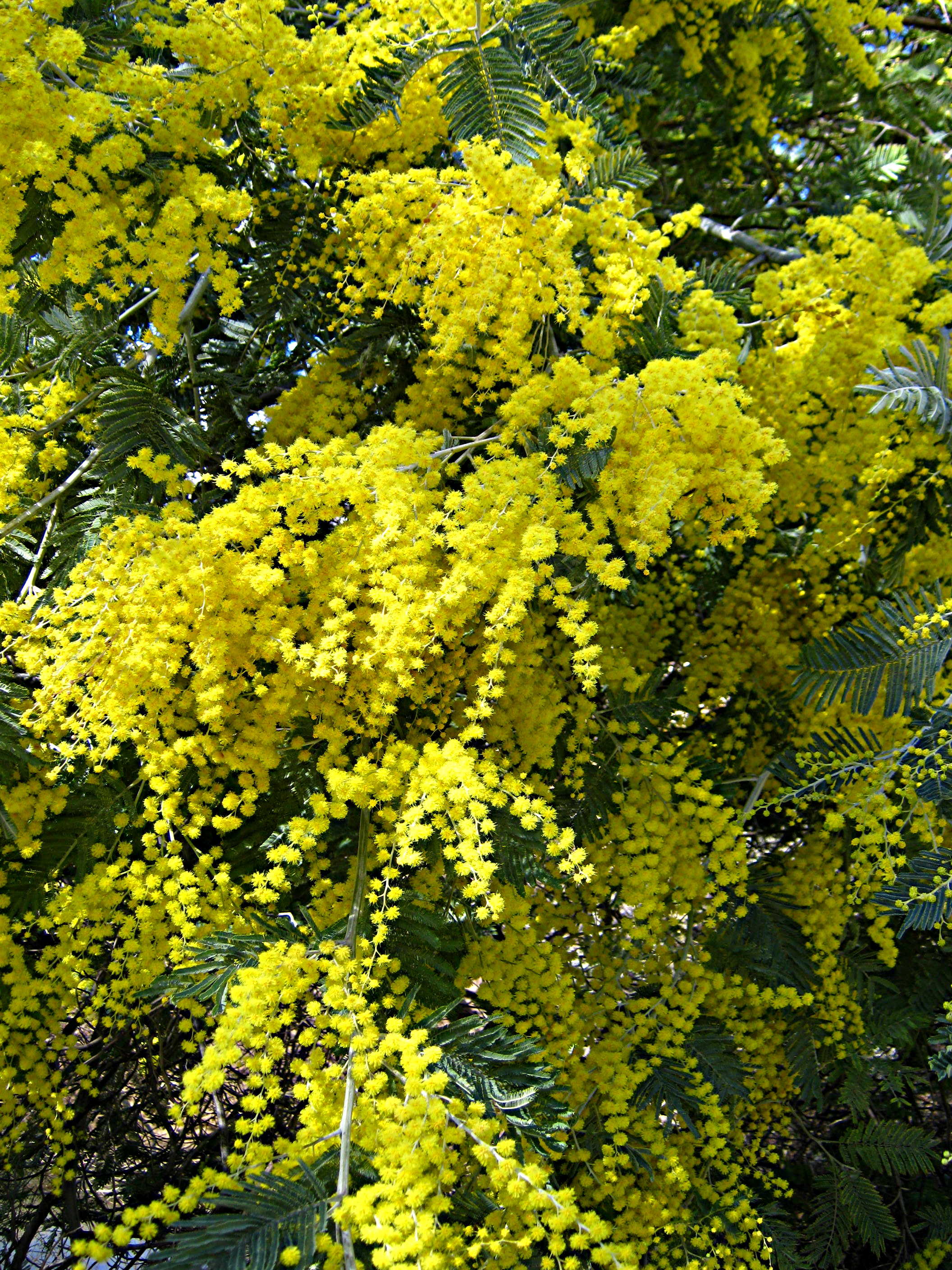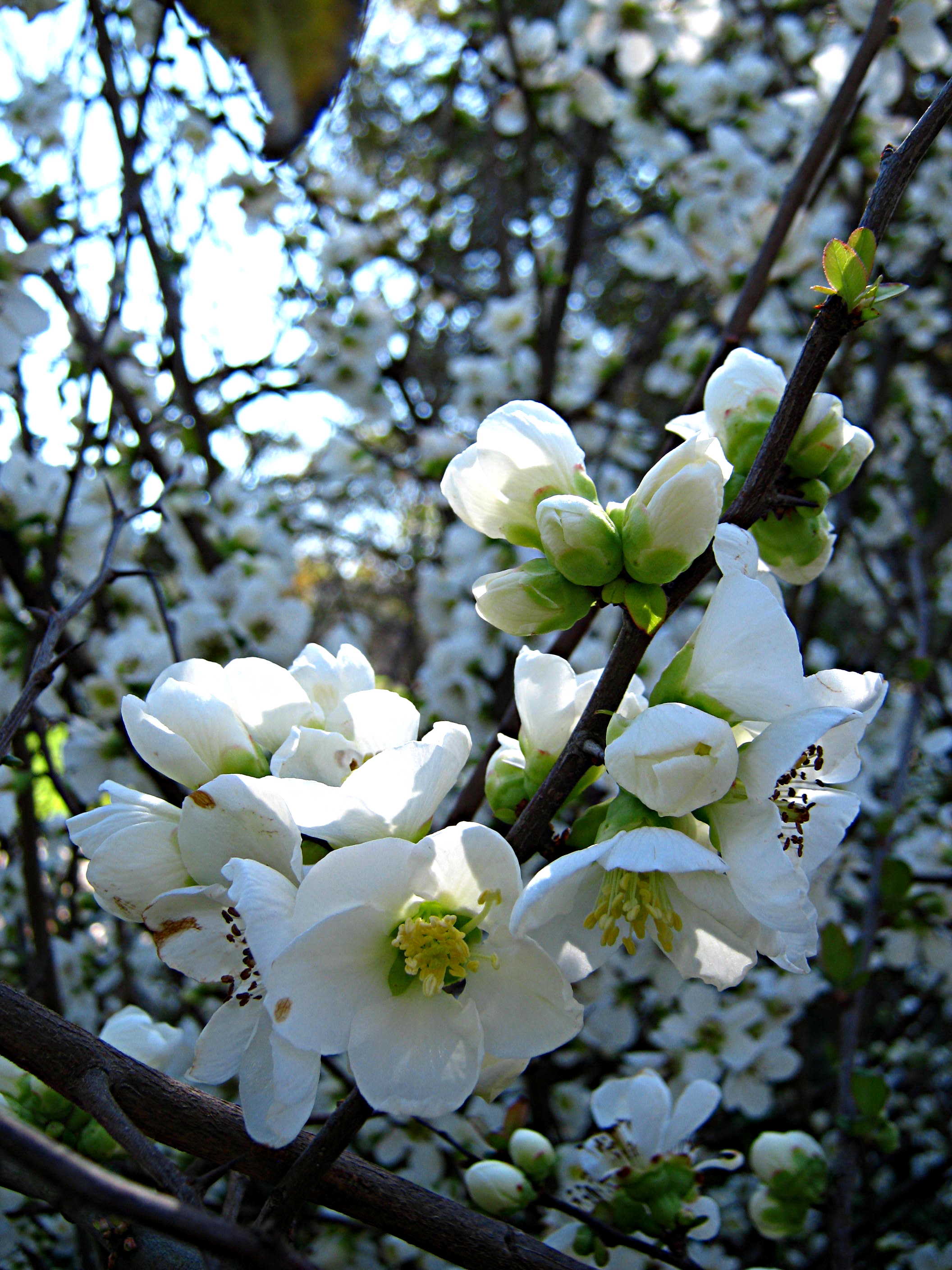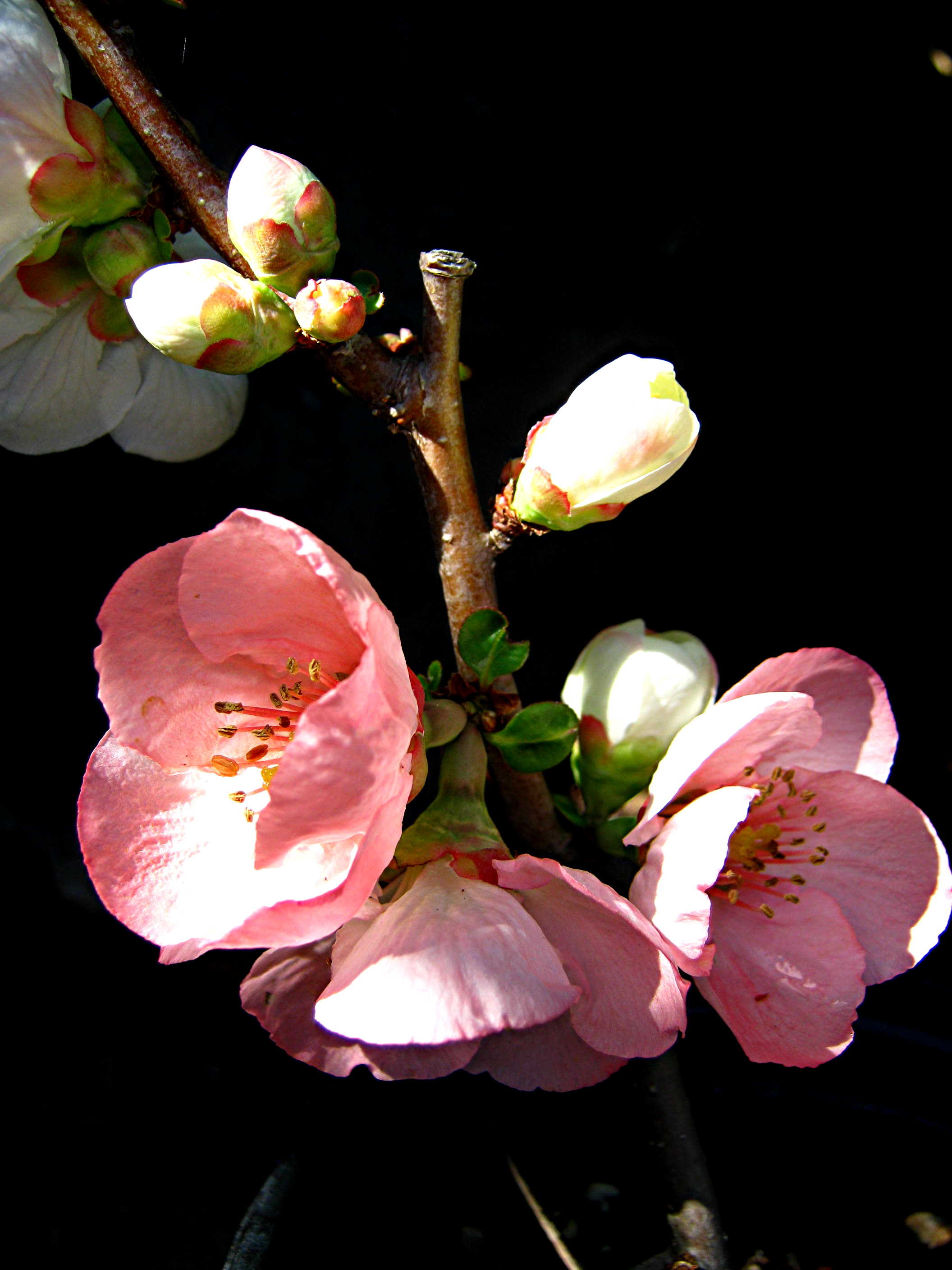Written for the Davis Enterprise, February 24, 2011
Click on any image for a larger version
Overheard at the UC Davis Arboretum, Feb. 20: "This is why I moved here from Michigan."
I was standing in the Eric E. Conn Acacia Grove, trying to get a close-up of the daffodil-yellow clusters of blooms. February is still technically winter, and we've had more than our share of dreary weather this season. But on a sparkling sunny February day recently, folks were outside enjoying the early flowers.
Trees blooming in February? Of course. The almond blossoms began a week ago. Flowering pears a week before that, and flowering plums have already passed their peak of bloom. The earliest flowering cherries such as Okame are in flower. In the family orchard the first peaches have broken dormancy. Back in the arboretum, a little further down the path from the acacias, Western redbuds are showing bud color; expect blooms in a week or so.
I am accustomed to getting inquiries about the early-blooming trees and shrubs. Folks who move here from real-winter climates can't seem to believe that this is normal. From the other end of the spectrum, folks like me who moved here from milder climates don't recognize them. Deciduous flowering trees and shrubs need a certain amount of winter chilling to break dormancy and flower properly. Coastal southern California doesn't get enough cold for that.
I do remember an old Acacia baileyana tree in our yard in San Diego; old by acacia standards, that is. Mostly subtropical trees or shrubs, fast-growing acacias tend to have weak wood and poor branch angles, so many fall apart after 20 years or so. I can't really recommend most species for residential landscapes, and nursery availability is very limited. Fast-growing, low-demand trees tend not to be popular with wholesalers; some may be available at arboretum sales. But the arboretum collection is a winter delight, and thanks to a donation from Dr. Conn there are now paths, benches, and signs identifying the species.
So what is blooming in February? More-or-less in order of bloom:
Flowering pear (Pyrus kawakami).
The first to bloom, these can be seen along F Street. In Southern California they are called Evergreen pears; down there, they get enough chilling to bloom, but don't drop their leaves in fall. Here they are usually deciduous. Drawbacks: odd flower odor; leaf-spot fungus, bacterial fireblight.
Almonds (Prunus amygdalus).
Almonds grow in a narrow climate range around the world, with California's Central Valley producing 80% of the world's supply. Commercial types get fifteen to twenty feet tall and broad, and two varieties are necessary for cross-pollination. The dwarf variety Garden Prince is self-fruitful and grows to about ten feet.
Almonds are not real fussy about soil. Water deeply every week or so during summer. Disease and pest problems are not significant.
Flowering plums.
Prunus blireiana is first to bloom with semi-double soft pink flowers. Foliage emerges bronze-red, then turns dark green by summer. Fruitless. Prunus cerasifera varieties are next, and are popular for the purple-red foliage. Krauter Vesuvius has become the most widely-planted type because it is nearly fruitless. Older varieties had copious fruit.
Plums aren't fussy about soil, and can even tolerate lawn watering. Leaf color is more intense in full sun. Leaf-spot fungus and aphids can be a nuisance but are manageable.
Flowering cherries
Most varieties bloom in March, but Okame (Prunus hybrid) is an early-flowering cherry with February blossoms. Ornamental cherries have diverse growth habits. This one is upright and round-headed.
Cherries are fussy about soil, requiring good drainage and at risk of crown rot if watered too often. Don't plant in the lawn!
Note: almonds, pears, plums, and cherries should have their trunks painted with an interior white latex paint at the time of planting to prevent sunburn and borers.
Magnolia?
Walking further to the west in the arboretum, past the Putah Creek Lodge and uphill toward the gazebo, I suddenly found a tulip tree in full bloom. Huh? Magnolia soulangeana blooms in early March, but this variety is ahead of schedule. Varieties range from dark to light pink, with other deciduous magnolias available that are pure white.
Magnolias are not drought tolerant, and the foliage can burn during extremely hot weather. The slow-growing trees reach ten to twenty feet or more tall with equal spread, depending on variety.
Flowering quince
Chaenomeles japonica. A non-descript deciduous shrub the rest of the year, quince suddenly bursts into bloom as early as January with blossoms opening for several weeks. Varieties range from three to ten feet in height, usually with an angular spreading habit. Flowers are pink, red, or white; in the case of variety Toyo Nishiki, all three colors occur on the same plant. The shrub has a tight clump of multiple shoots rather than a single trunk. It can be planted and pruned as a hedge. Very tough, carefree, they are tolerant of any soil, sun or light shade, and either regular watering or drought. Some set hard apple-like fruit, which is very aromatic and makes wonderful jam.
A few other notable February bloomers:
Lilac vine
(Hardenbergia violacea 'Happy Wanderer'): vigorous vine to 15 feet or more with royal purple flowers in February. Full sun is best; partial shade o.k. Freezing weather nips the flower buds some years.
Oregon grape
(Berberis aquifolium, formerly Mahonia aquifolium). More yellow flowers in the arboretum. Note: yellow flowers attract beneficial insects. Oregon grape can be a scruffy-looking shrub, and the leaves are prickly. But the shiny foliage and early winter bloom, plus bird-attracting fruit, make it a good background shrub in a wilder landscape. It is tolerant of sun or shade, regular watering or considerable drought.
Winter daphne (Daphne odora 'Marginata')
Folks admire the specimens blooming right now in the Ruth Risdon Storer garden at the west end of the arboretum. There are also some pure white-flowered daphne nearby in the Shields garden. The fragrance of daphne is astonishing. Unfortunately, they are easy to kill, requiring perfect drainage and careful water management.









No comments:
Post a Comment